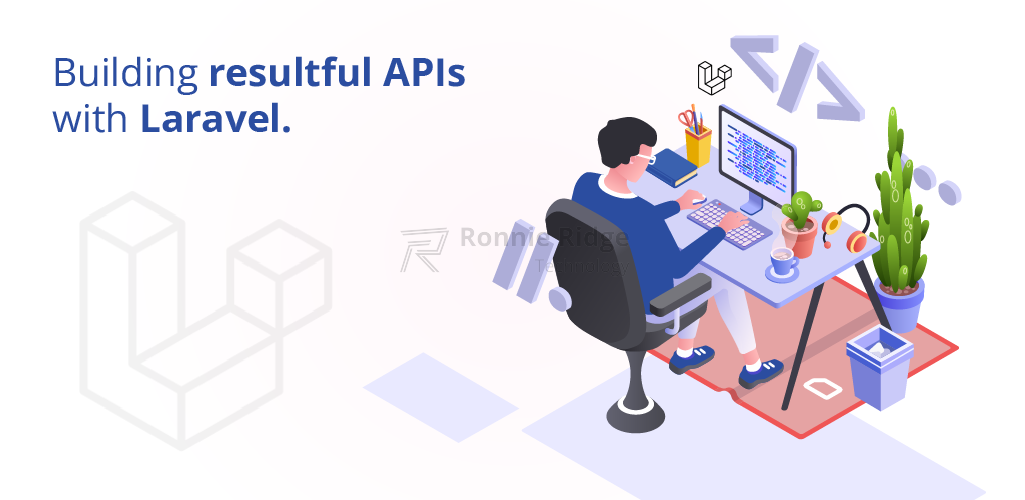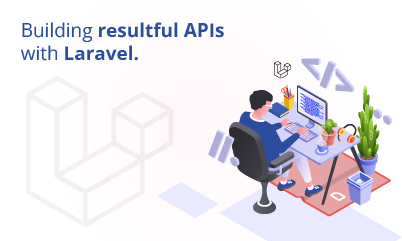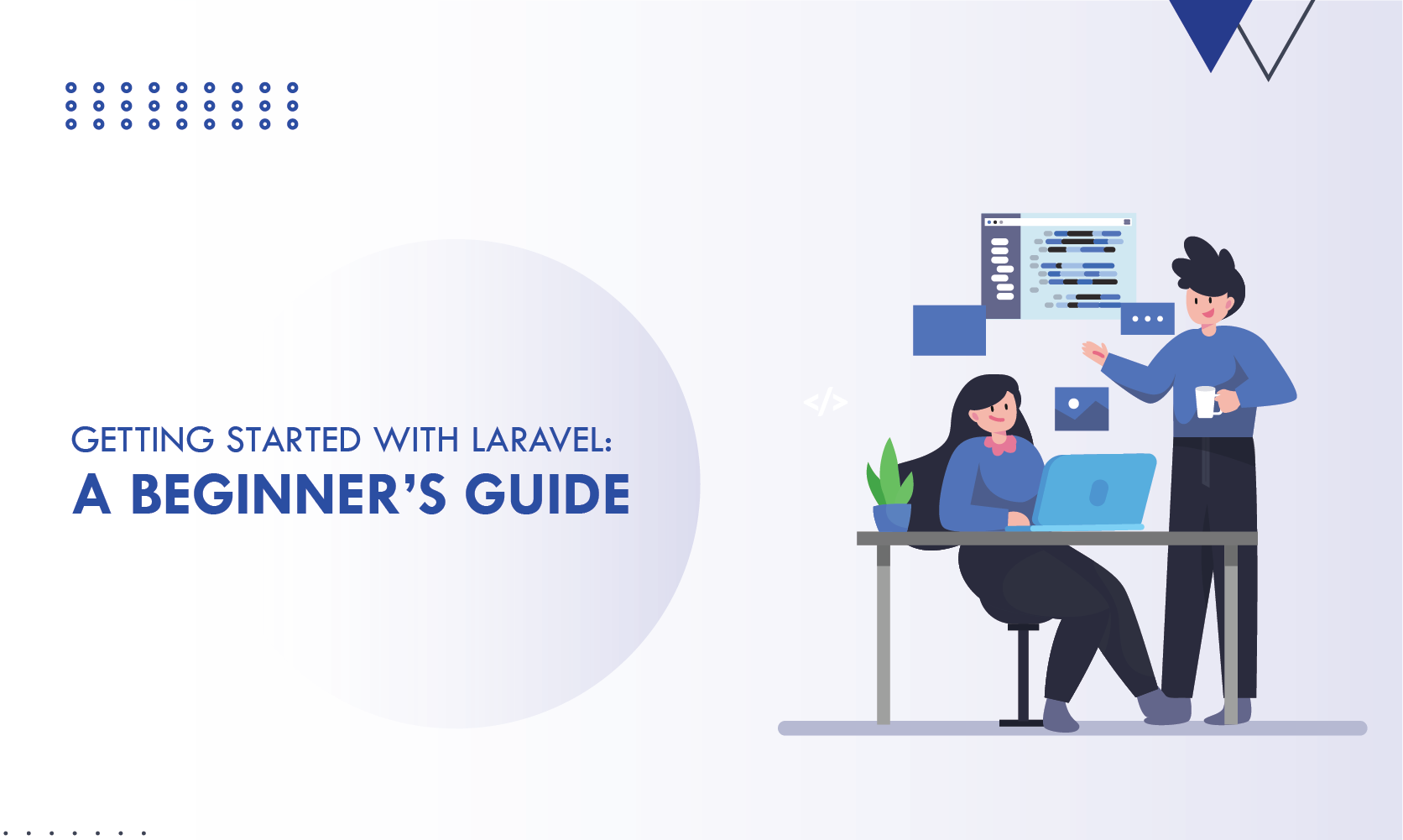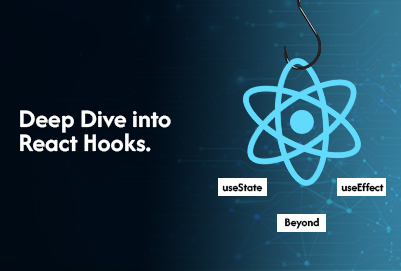 by: Admim
by: Admim
 February, 2025
February, 2025
In today’s digital landscape, RESTful APIs have become a backbone for connecting web applications, mobile apps, and third-party services. Laravel, with its elegant syntax and powerful built-in tools, makes it easier than ever to create robust and scalable APIs. This guide will walk you through the fundamentals of building RESTful APIs with Laravel.
1. What Are RESTful APIs?
REST (Representational State Transfer) is an architectural style that uses standard HTTP methods—GET, POST, PUT/PATCH, and DELETE—to interact with resources. A RESTful API is stateless, meaning that every request from a client contains all the information needed to process it. This makes your API scalable and easy to integrate with various clients, from web apps to mobile devices.
2. Why Use Laravel for API Development?
Laravel provides a rich set of features that simplify API development:
- Routing and Controllers: Define clean and intuitive API endpoints.
- Eloquent ORM: Manage database interactions effortlessly with an expressive query builder.
- API Resources: Transform your models into JSON responses with ease.
- Built-in Security: Features like CSRF protection, input validation, and robust authentication systems ensure your API stays secure.
- Middleware: Manage request filtering and authentication efficiently.
3. Setting Up Your Laravel API Project
Install Laravel
Start by creating a new Laravel project using Composer:
bash
composer create-project --prefer-dist laravel/laravel laravel-api
Configure Your Environment
Ensure your .env file is set up correctly for your database. For example:
dotenv
DB_CONNECTION=mysql
DB_HOST=127.0.0.1
DB_PORT=3306
DB_DATABASE=api_database
DB_USERNAME=root
DB_PASSWORD=your_password
4. Creating Routes for Your API
Laravel’s routing system is straightforward. Open routes/api.php and define your API endpoints:
php
use App\Http\Controllers\Api\UserController;
Route::get('/users', [UserController::class, 'index']);
Route::post('/users', [UserController::class, 'store']);
Route::get('/users/{id}', [UserController::class, 'show']);
Route::put('/users/{id}', [UserController::class, 'update']);
Route::delete('/users/{id}', [UserController::class, 'destroy']);
These routes follow RESTful conventions for managing “users” as a resource.
5. Building Controllers
Generate a controller to handle the API logic:
bash
php artisan make:controller Api/UserController --api
In the generated UserController.php, you can define methods like:
- index(): Return a list of resources.
- store(): Create a new resource.
- show(): Retrieve a single resource.
- update(): Update an existing resource.
- destroy(): Delete a resource.
Example: index() and store()
php
namespace App\Http\Controllers\Api;
use App\Http\Controllers\Controller;
use App\Models\User;
use Illuminate\Http\Request;
use App\Http\Resources\UserResource;
class UserController extends Controller
{
// Retrieve a list of users
public function index()
{
$users = User::all();
return UserResource::collection($users);
}
// Store a new user
public function store(Request $request)
{
$validatedData = $request->validate([
'name' => 'required|string|max:255',
'email' => 'required|email|unique:users,email',
'password' => 'required|string|min:8'
]);
$validatedData['password'] = bcrypt($validatedData['password']);
$user = User::create($validatedData);
return new UserResource($user);
}
// Other methods (show, update, destroy) can be implemented similarly...
}
Using Laravel’s validation ensures that the incoming data meets your requirements before processing.
6. Using API Resources for JSON Responses
API Resources allow you to control how your models are transformed into JSON. Create a resource using Artisan:
bash
php artisan make:resource UserResource
Then, in app/Http/Resources/UserResource.php, define the transformation:
php
namespace App\Http\Resources;
use Illuminate\Http\Resources\Json\JsonResource;
class UserResource extends JsonResource
{
public function toArray($request)
{
return [
'id' => $this->id,
'name' => $this->name,
'email' => $this->email,
// Exclude sensitive information like passwords
'created_at' => $this->created_at,
'updated_at' => $this->updated_at,
];
}
}
This layer of abstraction helps ensure a consistent and secure API response format.
7. Securing Your API
Authentication
Laravel Sanctum or Passport can be used to secure your API. Sanctum is simpler and perfect for most use cases:
bash
composer require laravel/sanctum
Follow the Sanctum documentation to set up token-based authentication.
Middleware
Apply middleware to your routes to ensure only authenticated users can access certain endpoints:
php
Route::middleware('auth:sanctum')->group(function () {
Route::get('/users', [UserController::class, 'index']);
// Other protected routes...
});
8. Testing Your API
Laravel comes with robust testing capabilities using PHPUnit. Write tests in the tests/Feature directory to ensure your API behaves as expected:
php
public function test_can_fetch_users()
{
$response = $this->getJson('/api/users');
$response->assertStatus(200);
}
Regular testing helps catch bugs early and ensures your API remains reliable as it scales.
9. Conclusion
Building RESTful APIs with Laravel leverages the framework’s powerful tools to create scalable, secure, and high-performance endpoints. By understanding how to set up routes, create controllers, use API resources, secure endpoints with authentication, and test your API, you can build robust web services that seamlessly integrate with any client application.
Ready to dive deeper into Laravel’s API capabilities? Check out the official Laravel Documentation for more detailed information and advanced topics.
Happy coding, and enjoy building your RESTful API!
Leave a Reply
Your email address will not be published. Required fields are marked
















0 Comments